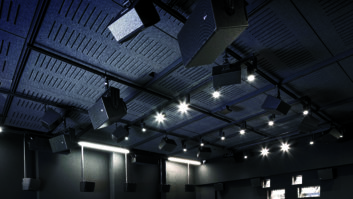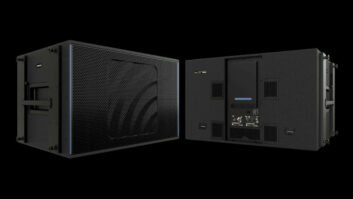Meyer Sound products and personnel were central to a new episode of MythBusters the popular weekly television show appearing on the Discovery Channel. The quirky series, produced by Australia’s Beyond Productions, combines hard science and wacky humor as its two hosts, seasoned special effects wizards and all-around gadgetry freaks Adam Savage and Jamie Hyneman, debunk or, occasionally, confirm various urban legends. Topics investigated by MythBusters have ranged from getting stuck on a flushing airplane toilet to removing bloodstains with Coca-Cola.
During the show’s premiere season, MythBusterscalled on Meyer Sound staff scientist Dr. Roger Schwenke to confront the legend that a duck’s quack doesn’t echo. To debunk this myth, live duck quacks were recorded and analyzed in a meadow at a duck farm, in Meyer Sound’s anechoic chamber and in a large empty warehouse. The question turned out to be rather more complicated than one would think.
The MythBusterss team returned to Meyer Sound recently to again enlist Schwenke, along with a custom-modified battery of Meyer Sound equipment, to test a myth rather less suited to squeamish viewers—the so-called “Brown Note.” It was a scientific investigation into a decidedly delicate subject.
The story of the Brown Note, also known as the “Disco Dump,” asserts the existence of a low-frequency vibration that, when reproduced at sufficient volume, resonates with the depths of the human digestive tract to cause what medical personnel call “involuntary gastrointestinal motility.” Different versions of the myth place the frequency between 5 and 20 Hz, and recent variations claim that the effect has been produced at loud rock concerts.
The Meyer Sound team, under the direction of Schwenke and John Meyer, devised a special test and measurement system to test the theory at levels far beyond that experienced at any concert and at far lower frequencies. Twelve 700 hp ultrahigh-power subwoofers had their input cards modified to allow deep subsonic frequencies and their ports plugged to prevent a loss of efficiency at frequencies below their normal operating range. The modified cabinets were then stacked three high and faced inward in an open ring configuration. Test signals were generated by a SIM 3 audio analyzer, with software modified to produce tones down to 5 Hz. A precision B&K sound level analyzer fed by a model 4189 microphone and ZF 0023 attenuator measured levels.
Perrin Meyer, Meyer Sound’s software R&D manager, generated computer models of the subwoofer stacks’ behavior and animations of the effect their output would have on a human-sized cylinder.
The test sessions were conducted in a large parking lot at Golden Gate Fields racetrack, on the shores of San Francisco Bay. Savage stood in the middle of the subwoofer ring, where he experienced the effect of very low-frequency sounds (down to 5 Hz) at extremely high levels (120dB SPL with a 9Hz sine wave, up to 153dB peak with narrow-band noise), though the higher levels were possible only above 20 Hz. Safety was a prime consideration; tests were limited to about five minutes in each frequency range, and industrial-grade hearing protection was used above 120 dB. Savage was wired to medical monitoring machinery and watched closely by paramedics during the tests, while additional protection for those working in close proximity to the subwoofer stack was provided by a box of extra-large Depends.
“I had anticipated very pronounced physiological effects,” says Schwenke, who supervised the investigation. “As predicted, Adam felt vibration in the chest and experienced blurring of vision from vibration of the eyeballs. We also heard distinct modulation of his voice when he was speaking.”
But whether the Brown Note could produce its distasteful response will only be revealed when the MythBusters episode airs on the Discovery Channel. Check it out for yourself, on Wednesdays from 8 to 9 p.m. (ET/PT) beginning on September 29.
For more information, please go to Meyer Sound’s Website at www.meyersound.com.







